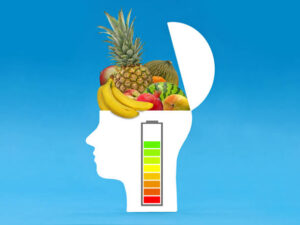Backyard gardens are wonderful for relaxing and keeping nature closer to home. An eco-friendly garden might be a good option if you’re environmentally conscious and want a yard that is easy to maintain.
While gardening is a wonderful hobby, if you don’t garden mindfully, you can end up creating a lot of waste. You can work towards a zero-waste lifestyle as your garden grows rather than view it as an unattainable goal.
Get Started with These Eco-Friendly Garden Plants
You can start by looking at these great options in your eco-friendly garden:
1. Herbs

In addition to adding flavor to a variety of dishes, mint, rosemary, and thyme take up little space and require little maintenance in a zero waste garden. Purchasing herbs from store shelves, which often come in excessively plastic packaging, is less expensive when you grow your herbs.
Invasive mint can grow in gardens and nearby areas. When planning, use caution as they may not harm other plants nearby.
2. Tomatoes

Home eco-conscious gardeners love tomatoes because of their countless varieties. A fresh homegrown tomato tastes better than a store-bought one, and it’s loaded with vitamins and antioxidants.
3. Broccoli

Your eco-friendly garden will certainly benefit from broccoli’s delicious taste and nutritional value! There are a variety of soil types that can support this cool-season crop. While it prefers well-drained soil with full sun.
Be patient when planting broccoli and space them at least a foot apart. The plant produces side shoots for months after it has matured, so you can enjoy them after harvesting the main head.
4. Okra

Even though okra tends to grow best in warmer climates, some varieties can grow in colder climates as well. Soil that is well drained but moist is all they need to thrive. The blooms of okra look like pretty hibiscuses! They’re beautiful to look at and delicious to eat.
5. Onions

Why wouldn’t you grow onions since they are so useful in cooking various food varieties? Depending on the climate, they can grow in the spring and be ready for harvest by midsummer.
The plants will remain dormant all winter and come up in spring if you plant them in the fall instead. It’s best to place them in a sunny, well-drained spot. Also, keep the soil moist since onion roots can’t absorb water well.
6. Turnips

In many recipes, turnips make a fantastic alternative to carrots or potatoes as a cool-weather vegetable. Plus, both the greens and the root vegetables are delicious! They are excellent choices to plant in zero waste gardens.
7. Carrots

You may not know this, but fresh carrots taste way better than the ones at stores. They are also more eco-friendly because growing them doesn’t require toxic chemicals.
Start growing this colorful root vegetable at home today for all of these reasons and more. During hot spells, keep the soil well-watered and mulch your carrot garden.
8. Lettuce

The fridge can quickly become icky with gourmet greens. Make your own and you’ll be able to harvest some leaves from your zero-waste garden just before dinner instead of buying them at the store.
As seeds, lettuce grows well in cool weather. The shallow roots make it a great choice for container gardening and window boxes.
9. Garlic

If you have never grown garlic, you’ll be amazed at how easily they grow! As soon as spring arrives, it pops up. The two types are as follows. Softneck, consisting of several cloves can stay for a longer period. Hardneck, which makes curled “scapes” in late April and bulbs in midsummer.
10. Radishes

As soon as three weeks after planting, these hardy root vegetables are ready for harvest! Despite their colorful roots, they are edible throughout the year when you grow them using eco-friendly garden practices.
11. Beans

In addition to their wide variety, beans are prolific (you can pick them as many times as you like). It is best to sow seeds directly into the ground rather than transplanting them. You may want to consider pole beans, which need trellises for climbing, or bush beans, which are smaller and can be grown in containers.
12. Cabbage

Aim to plant cabbage in a sunny location in your eco-friendly garden if you want to grow this hardy, leafy vegetable. Sow your seeds indoors now to harvest in the summer. To harvest in the summer, plant six to eight weeks before frost in spring.
13. Cucumbers

It will take some space for you to grow most cucumber varieties since they are heat-loving vines. If you provide them with a cage or trellis, they will be able to climb vertically, saving space in your garden.
Try to find round, yellow, compact, or miniature varieties to grow in your eco-friendly garden. Direct seeding is best since transplants can be problematic.
14. Peppers

Peppers thrive in sunny patios, decks, and beds where it is hot. When you are unable to start them inside before the last frost, transplants are a better choice. You’ll need space to stake peppers, so be sure to provide it.
15. Spinach

You can plant spinach seeds as soon as the ground is workable, and they do not mind light frosts at all! It will bolt if you wait too long to sow it: If you wait too long, it will go to seed. Hot climates require more heat-resistant varieties. You can use the baby leaves in salads or sauté them for sautéing.
16. Potatoes

We recommend selecting a regular or sweet potato with multiple eyes (the little offshoots that appear) when growing from scraps. Look for signs of mold on the potato you choose.
Plant the potato directly in a container or garden once it has good roots. When the soil feels dry on top, water it. Keep the soil moist at all times. You can then proceed as you would with any other potato plant.
Best Eco-Friendly Garden Practices
It’s hard to beat fresh vegetables picked right from a zero-waste garden. A home garden is a great place to grow healthy vegetables year-round, such as tomatoes, snappy green beans, and hardy potatoes.
To start a vegetable garden, you don’t even need a huge yard! You can also place containers on your balcony, deck, or patio, where your plants can flourish. In case you’re feeling extra ambitious, plant seeds indoors a few months before planting them outdoors.
It’s important to ensure your garden or pots receive eight hours of direct sunlight to get the best harvest. Also, keep in mind that some plants prefer a different temperature than others! Early spring is the best time to plant peas, for instance, since peas prefer chilly weather.
You can’t plant tomatoes outside until after the last frost if you’re wondering how to grow tomatoes. If you want to grow pumpkins, don’t forget to plant flowers along with your pumpkins. They require pollinators to mature. Your garden will look beautiful with spring flowers!
It’s easy to plan your eco-friendly vegetable garden layout once you pick the right vegetables to grow, from lettuce to potatoes. You’re ready to plant these easy vegetables this year, so put on your gardening gloves and get to work.
Read More: Sustainable Gardening Guide: 15 Zero-Waste Tips for Beginners
Eco-Friendly Garden Maintenance

Keep an eye on your garden regularly. Use some natural homemade remedies to treat insect damage and disease.
- Regularly apply tea, manures, and compost:
After all, your plants are fed by the soil in a produce garden. At the end of a growing season, you can top up with compost and manure.
Plants are more likely to absorb nutrients quickly when liquid fertilizers are used in winter. Your own compost tea or weed tea can be used to make liquid fertilizers.
In a bucket, put a few handfuls of compost and let it sit for a while. Once the liquid has been strained, place it in a bucket or watering can. Water and one part of your mix should be mixed to make the liquid diluted. Watch the leafy green vegetables grow as you pour them over the soil!
- Controlling pests:
A disease-resistant, healthy garden does not rely on chemicals to manage pests, but rather on ensuring the right conditions are created for growing disease-resistant plants. Here are some steps that should help.
To grow a healthy garden, there has to be plenty of organic matter, moisture, and diversity.
- Planting companions:
Your plants will benefit from this method when you work with nature. Bugs that eat good plants repel some, while bugs that eat bad plants attract others.
- Biological method:
A healthy garden with spiders, lizards, birds, and frogs is also a good pest control method. Insects that you were hoping to eradicate are more likely to appear in your garden after chemical sprays harm them.
Conclusion
In addition to reducing greenhouse gas emissions, home organic gardening helps reduce mass agricultural production. In addition, it absorbs more carbon dioxide from the atmosphere and releases it into the atmosphere.
You can eat fresh, nutrient-rich food if you grow your food using eco-friendly gardening tips. Taking in more minerals, vitamins, and enzymes in your food will make you healthier. In addition to physical exercise, you also benefit from mental relaxation. Eat fresh, healthy food every day and get in the gardening groove.







